When you decide to embark on the Camino de Santiago, one of the first questions that arises is what footwear to wear. When embarking on a Jacobean route, walking an average of 20 km per day for several consecutive days, your main tool will be your feet. That is why there are some important aspects to consider when choosing the footwear we will walk with. In the following article, we offer you the complete guide to footwear for the Camino de Santiago.
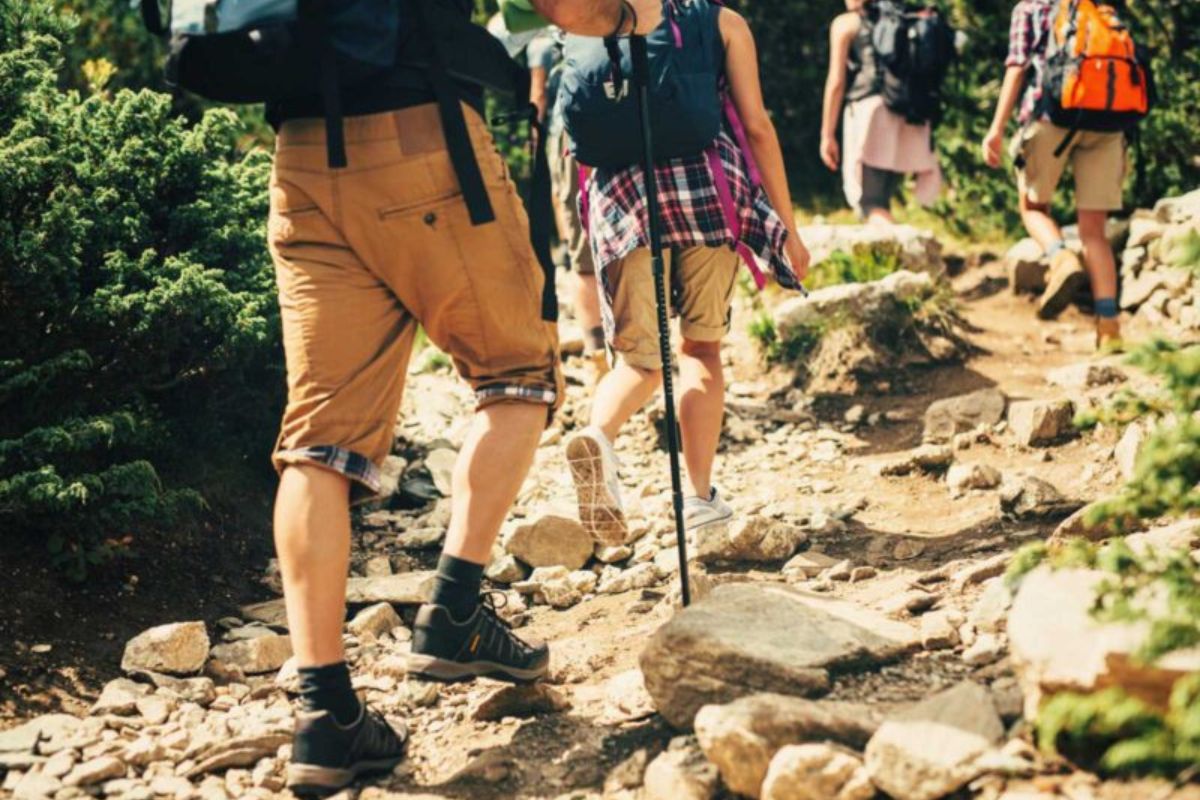
Choosing good footwear is key to having an optimal experience on the Camino
The Importance of Footwear on the Camino de Santiago
When you embark on the Camino de Santiago, your feet will be your best friends and allies. Therefore, it is essential to choose the right footwear that provides you with comfort and protection throughout the journey. Walking long distances every day can be exhausting for the feet, so you need footwear that reduces impact and minimizes the risk of injuries.
Recommended Footwear Types
There are different options for footwear to wear on the Camino de Santiago, and here we present the three most common.
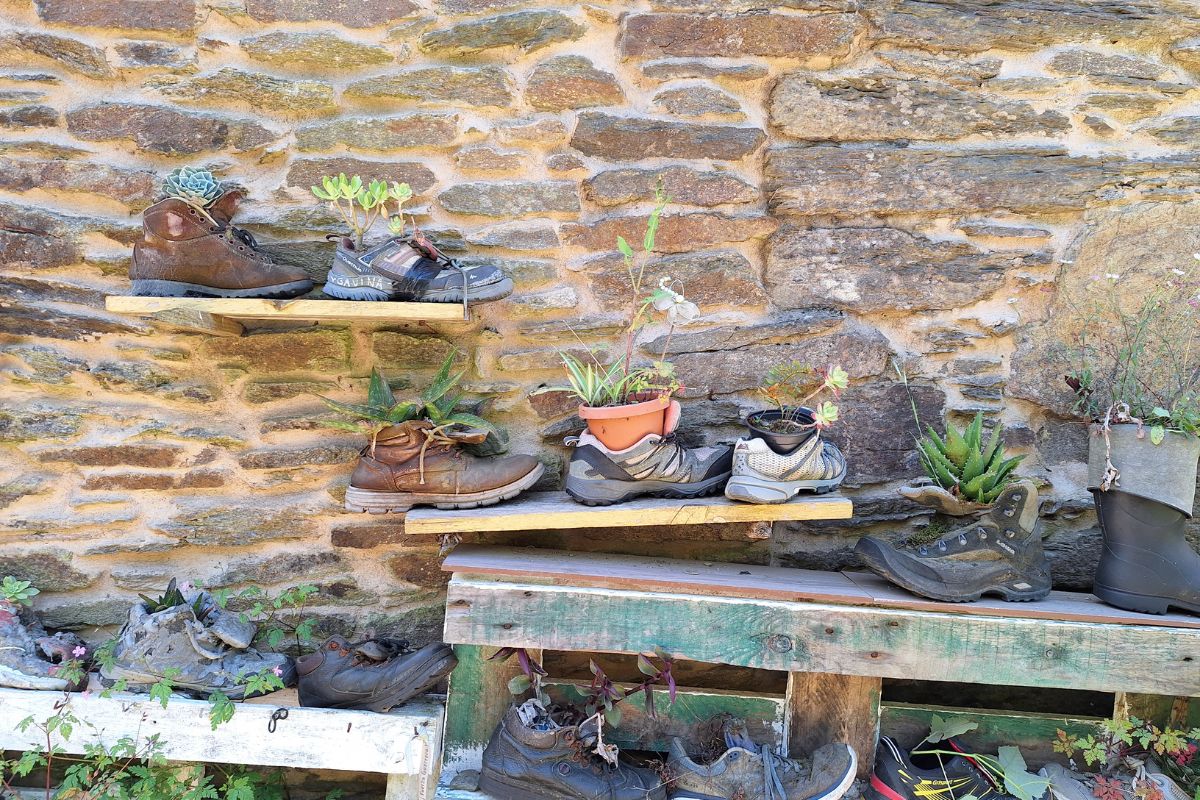
There are three main types of footwear for the Camino
Athletic Shoes
Athletic or hiking shoes are the preferred option for those seeking comfort and lightness. Choose shoes with good arch support, cushioned soles, good traction, and that are flexible and breathable. It doesn’t hurt if they include a waterproof layer to protect your feet from possible rain. This choice of footwear is ideal for less rugged terrain and climates that are not very extreme or rainy.
Hiking Boots
Hiking boots are an excellent option if you prefer greater stability and protection for your feet and ankles. With their sturdier soles, they are especially suitable for rugged or very rocky terrain. They are the perfect choice if you plan to walk the Camino in cold or rainy weather, as they are warmer.
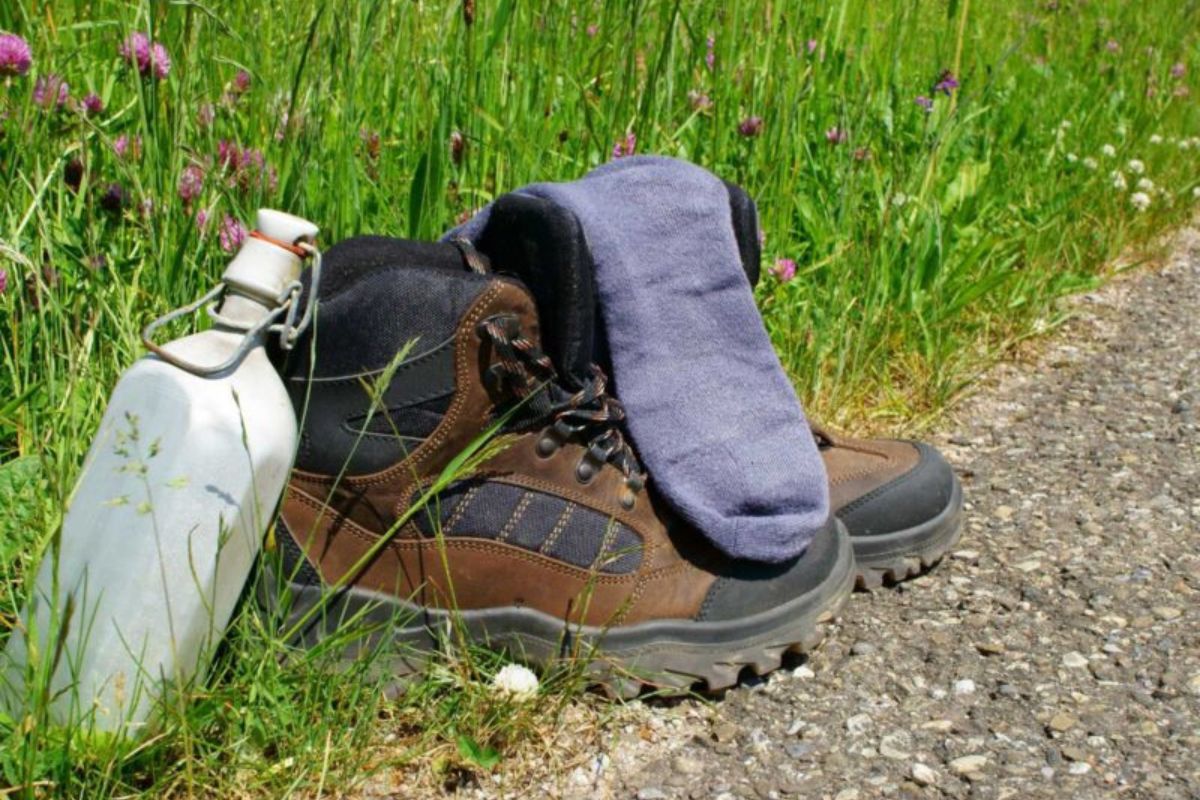
Hiking boots are highly recommended on high mountain routes
Choose boots that are waterproof and breathable to adapt to different weather conditions. However, in very hot periods or areas, they are not highly recommended, as they are less breathable and heavier, which can easily cause blisters.
Hiking Sandals
In warm weather, many people opt for hiking sandals because of their great comfort and breathability. It is very important that they have adjustable straps and non-slip soles. Do not confuse them with regular sandals, which we always recommend for the end of the stage, allowing your feet to rest.
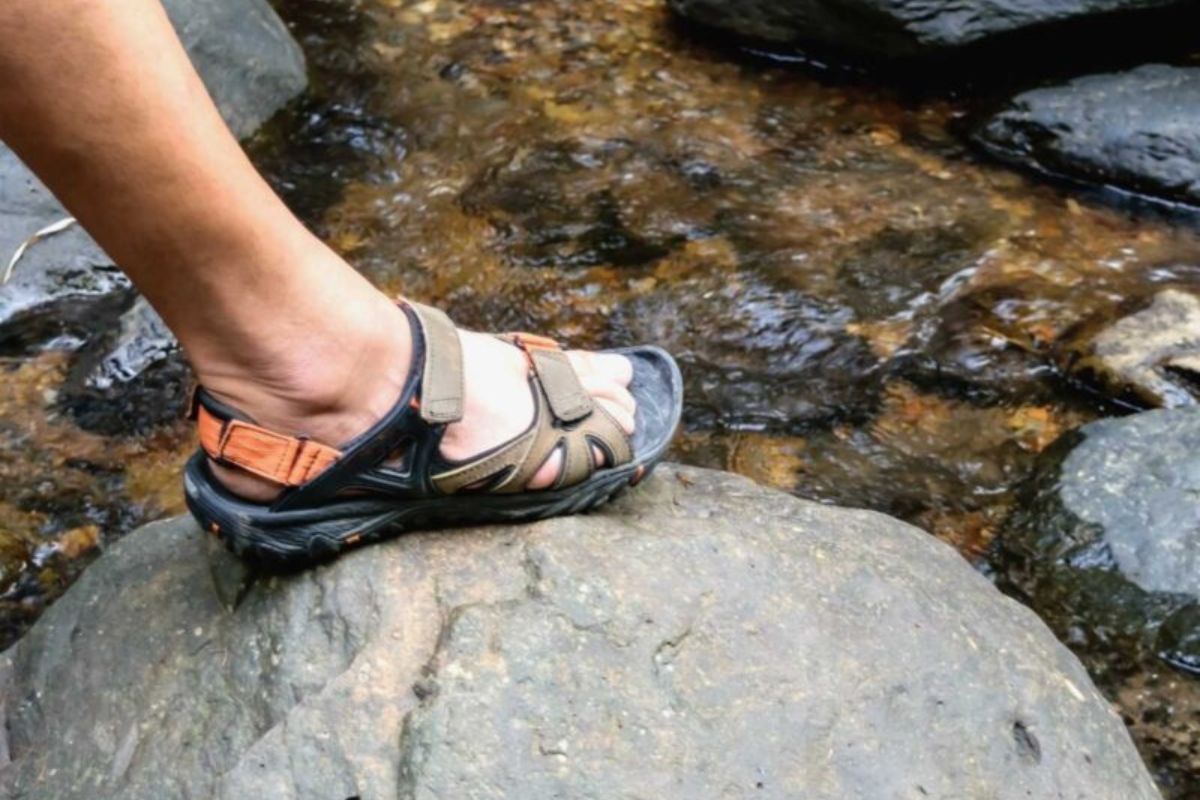
If the terrain is gentle and the weather is good, wearing hiking sandals is a relief for your feet
This option is highly recommended for more relaxed walks in terms of terrain. However, they are not recommended for long distances, being only advisable as secondary footwear for simpler stages. The only downside they may have is that, occasionally, a stone may enter between the sandal and your foot.
Key Features of Footwear for the Camino de Santiago
Regardless of the type of footwear you choose, there are three key features to consider.
- Comfort: the footwear should fit well to your feet and provide comfort during long walks. It is advisable to try on the footwear before starting the Camino to ensure a proper fit.
- Breathability: the Camino de Santiago involves walking for several hours a day, so your feet will sweat. Choose breathable footwear that allows ventilation and prevents moisture buildup.
- Cushioning: the footwear should have good cushioning to reduce impact on your feet and joints. This will help prevent injuries and maintain comfort throughout the journey.
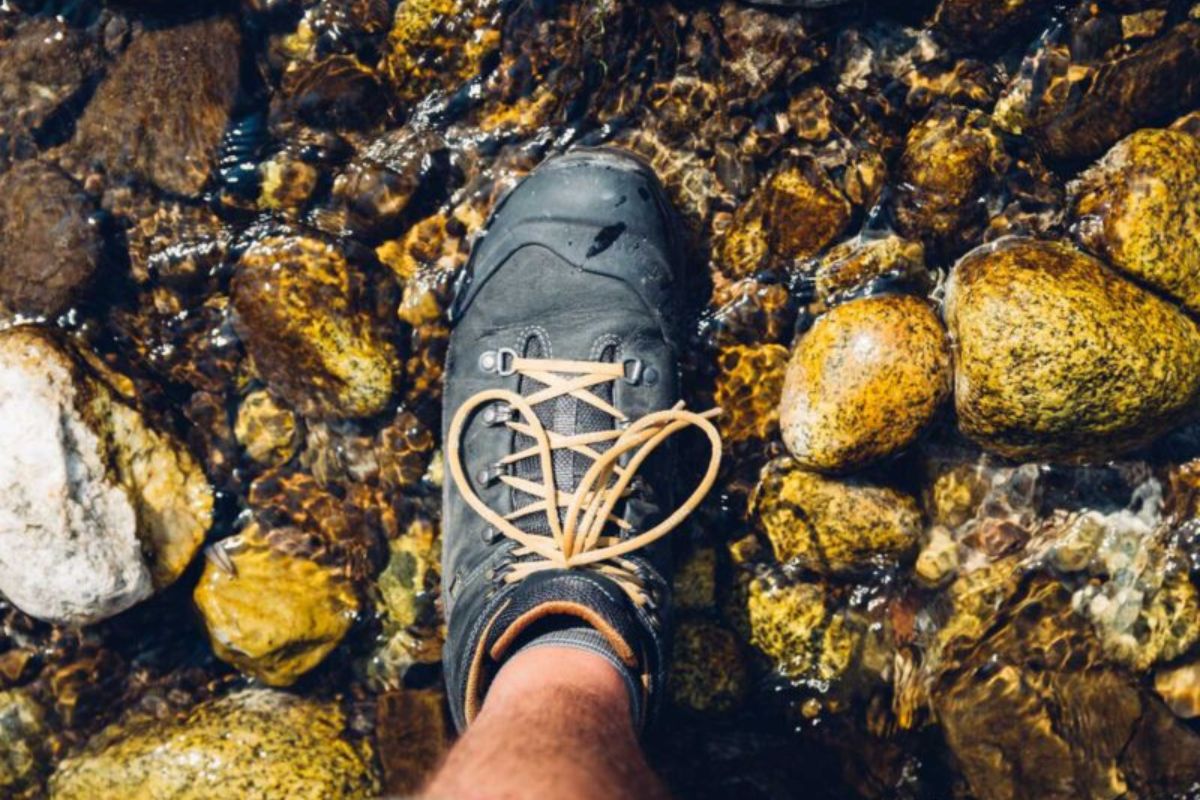
Hiking shoes are the most common choice among pilgrims
Additional Care and Recommendations
In addition to choosing the right footwear, it is important to take care of your feet during the Camino de Santiago. Here are some recommendations for foot care.
Proper Socks
Use breathable, seamless socks to avoid friction and blisters, so forget about cotton socks, as they retain moisture. Of course, avoid socks that are too thin, as they can cause too much friction with the footwear. And conversely, also avoid those that are too thick, as they will make the foot sweat much more. On the other hand, anti-blister socks can be a great help, but remember, they are not magical.
Listen to your body: stop, rest, and breathe
This is advice for both you and your feet. Listen to your body, do not push it beyond its limits, and stop as many times as you need to. Take breaks to give your feet a rest, as they also suffer from the kilometers. Perform gentle massages and stretches to relieve muscle tension, and take off your shoes when your feet ask for it.
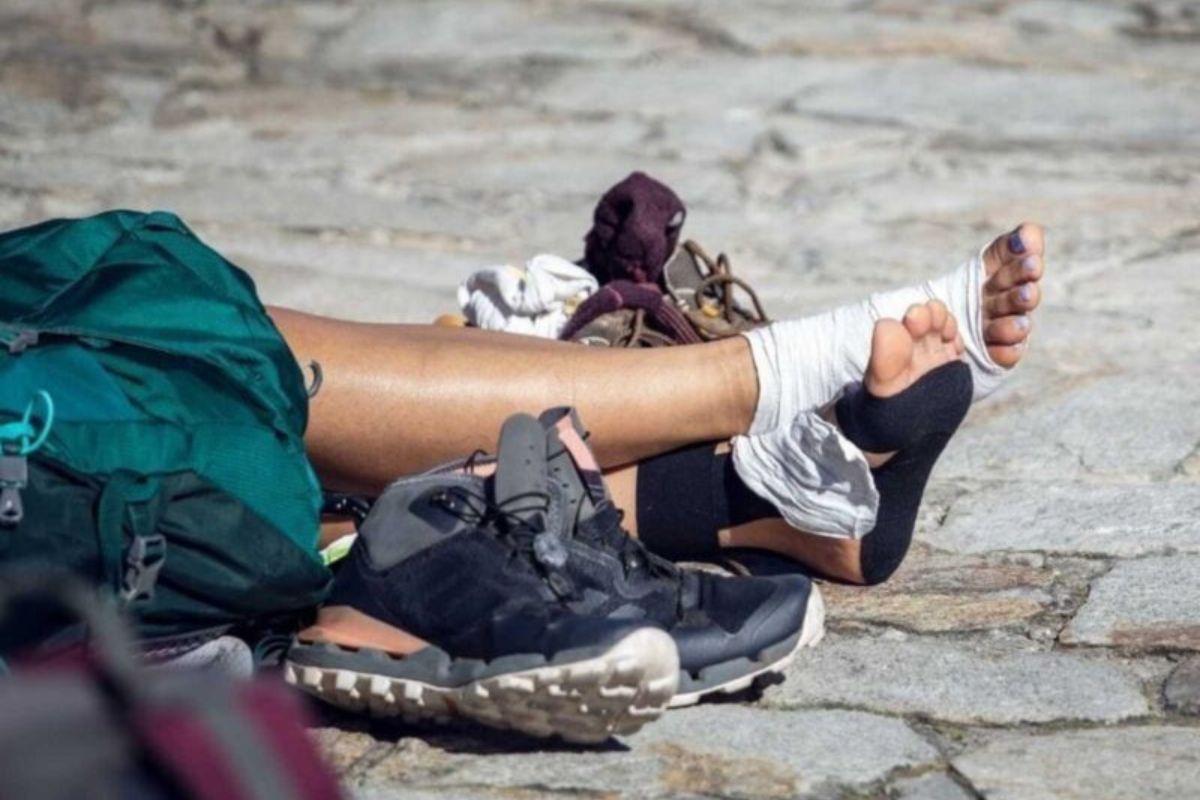
Take care of your feet before, during, and after the stage
Carry a small first aid kit that includes bandages, scissors, and products for foot care. This way, you will be prepared to treat any blisters, chafing, or minor injuries, and in that case, treat them as soon as possible. Do not let a small injury escalate, or your feet will start cursing at you.
Prevent and heal
Although we all have our tricks, applying vaseline to the foot before starting each stage can reduce the appearance of blisters and chafing. If they have already appeared, it is not a bad idea to use some kind of protection, whether it be band-aids or silicone blister pads, as they reduce friction and relieve the wound.
Size matters
The size should be perfect for your foot: neither too large nor too tight. A size too large can cause the foot to move inside the shoe and cause injury. If, on the other hand, it is too tight, you may experience chafing that will ruin your experience.
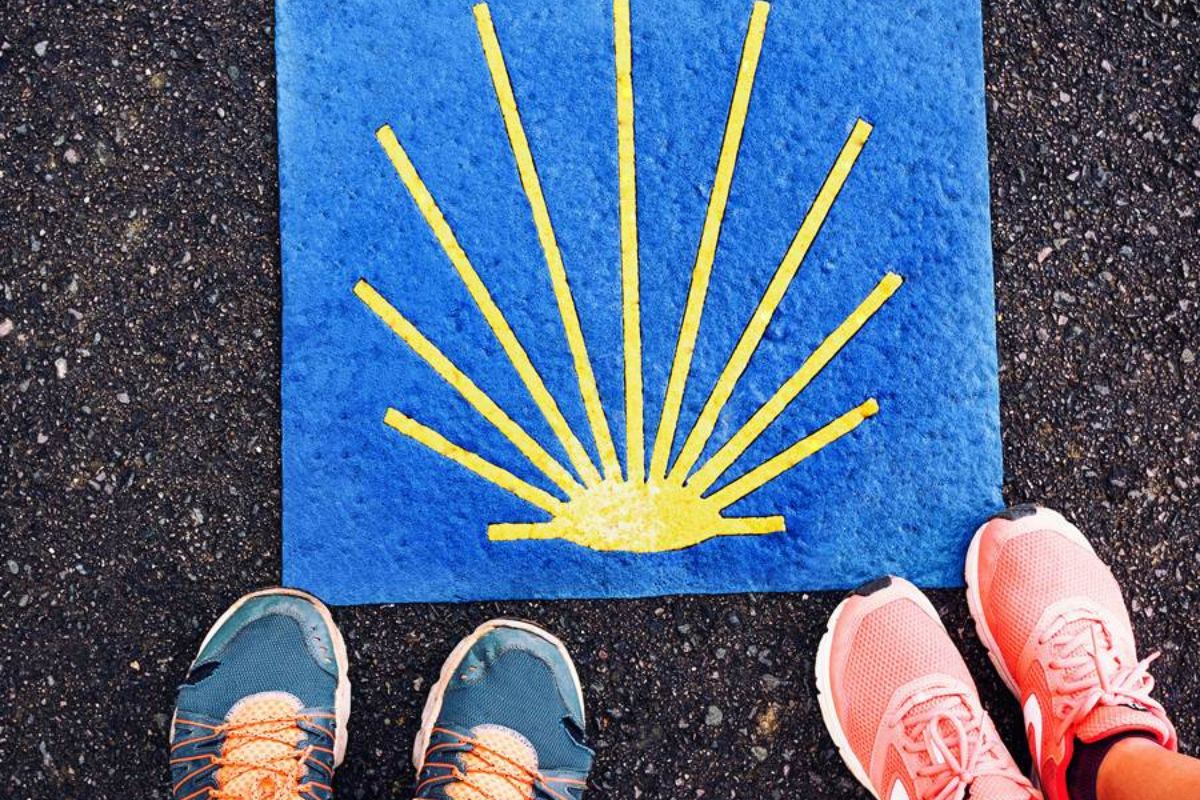
Choose the best footwear for the best pilgrim adventure
Never wear new shoes on the Camino
This is perhaps the advice that has saved the most feet on the Camino de Santiago. As with everything in life, it’s better to stick with the known than to discover a blister. Footwear for the Camino de Santiago should have been worn at least a couple of weeks before the trip. Remember that you will walk hundreds of kilometers with them, and they must be accustomed to that footwear before embarking on this journey.
Start the Camino on the right foot
In summary, choosing the right footwear is essential to enjoy a comfortable and safe experience on the Camino de Santiago. Remember that each person has different needs and preferences, so it is important to find the footwear that suits you. Prepare your feet and enjoy this incredible adventure!

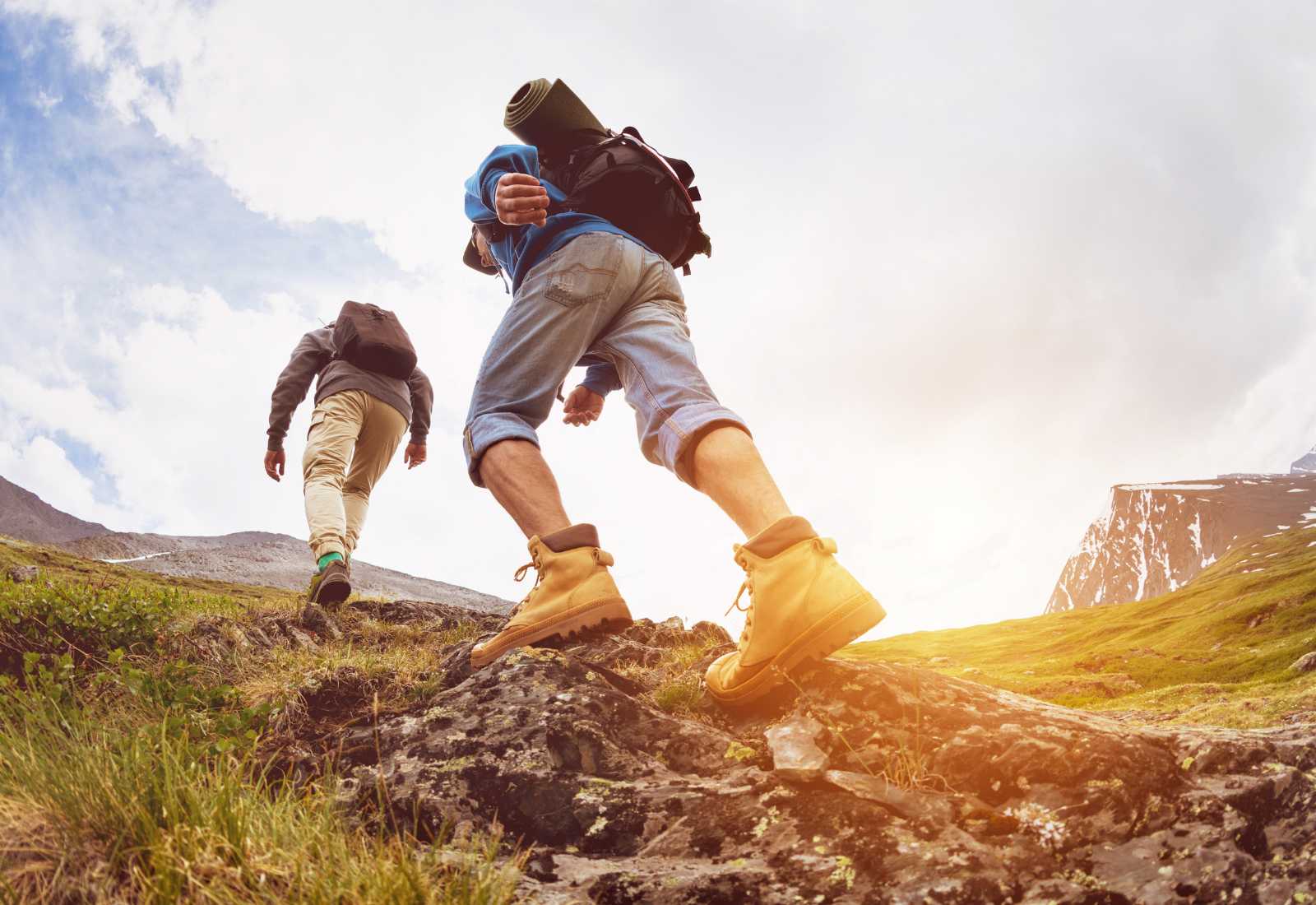


Leave A Comment